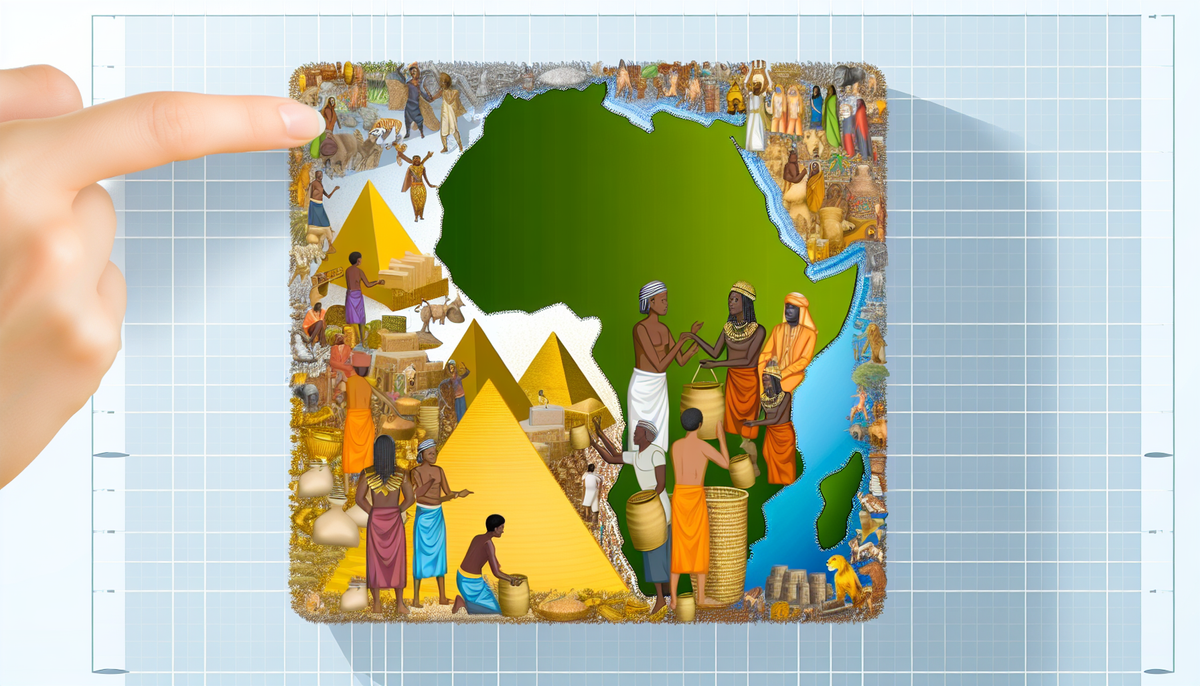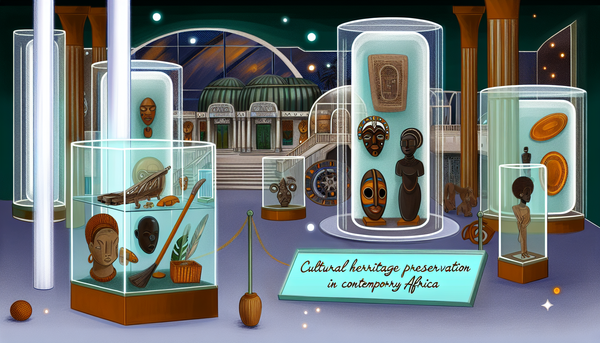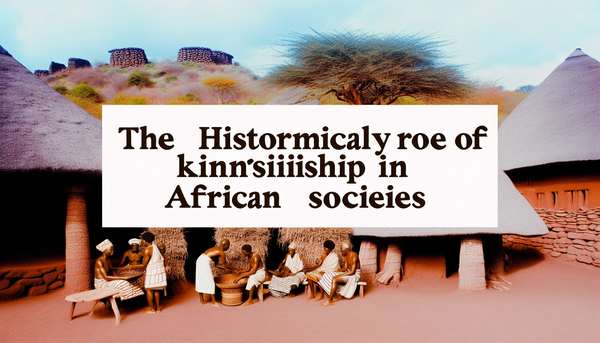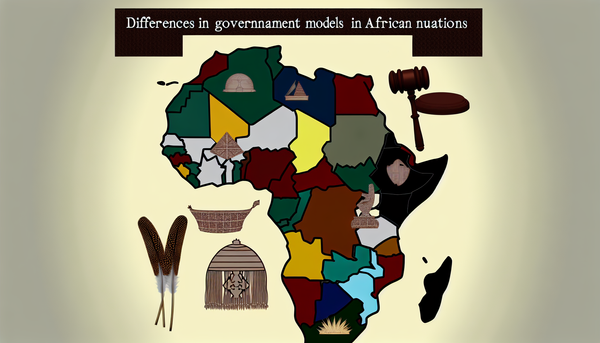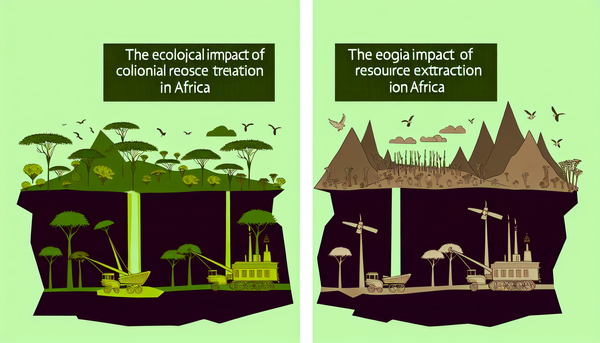Trade has played a pivotal role in shaping the historical landscape of Africa, influencing the rise and fall of numerous kingdoms across the continent. From ancient times, African societies engaged in extensive trade networks that spanned vast distances, connecting regions as diverse as the Sahara Desert, the East African coast, and the interior savannas. The exchange of goods such as gold, ivory, salt, and textiles not only enriched local economies but also facilitated cultural exchanges that would leave lasting legacies.
Key trading hubs like Timbuktu, Gao, and Addis Ababa emerged as centers of economic activity, attracting merchants from Europe, the Middle East, and Asia. These interactions led to the dissemination of ideas, religions, and technologies, contributing to the intellectual and cultural flourishing of African kingdoms.
Additionally, trade fostered diplomatic relationships and alliances, allowing kingdoms to assert their power and influence. However, it also introduced challenges, as competition over lucrative trade routes sometimes resulted in conflicts and shifts in power dynamics. Understanding the historical impact of trade in Africa is essential to appreciating how it has shaped the continent's development, identity, and position in the global economy throughout history.
Trade routes were crucial to the expansion and prosperity of African kingdoms, serving as the arteries through which wealth and resources flowed. The trans-Saharan trade route, for instance, connected North Africa with sub-Saharan regions, allowing kingdoms like Mali and Songhai to thrive through the exchange of gold, salt, and other commodities. This network not only facilitated commerce but also enabled the diffusion of cultures, religions, and technologies, enhancing the social fabric of these kingdoms.
Coastal trade routes along the Indian Ocean played a significant role in the growth of Swahili city-states, such as Kilwa and Mombasa. These bustling ports became melting pots of various cultures as they traded ivory, spices, and textiles with merchants from Arabia, India, and beyond. The wealth generated by these exchanges contributed to the construction of impressive architectural feats and the patronage of arts and learning.
Additionally, the control of trade routes often determined the political landscape. Kingdoms that effectively managed these routes could assert their dominance over competitors, leading to the establishment of powerful empires. As trade routes evolved, they continued to influence the geopolitical strategies, economic stability, and cultural developments of African kingdoms, shaping their destinies for centuries.
The exchange of goods along trade routes in Africa was not merely an economic activity; it also served as a catalyst for profound cultural interactions among diverse communities. Merchants and traders from various regions brought not only tangible products but also ideas, beliefs, and traditions, creating a tapestry of cultural exchange that enriched African societies. For instance, the flow of gold and salt, essential commodities, facilitated trade with distant lands, fostering relationships that transcended geographical boundaries.
As goods were exchanged, so too were cultural practices. The introduction of Islam through North African traders significantly influenced the social and political structures of kingdoms like Mali and Songhai. This led to the establishment of Islamic schools and mosques, enhancing literacy and education and promoting a shared religious identity among diverse ethnic groups.
In addition, the cross-cultural dialogue facilitated by trade led to advancements in various fields, including agriculture, craftsmanship, and art. Techniques and styles traveled alongside goods, resulting in unique blends of artistic expression. Thus, the exchange of goods not only bolstered economies but also enriched the cultural landscapes of African kingdoms, creating a legacy of diversity and resilience that continues to shape the continent today.
Commerce acted as a powerful engine of economic transformation in African kingdoms, reshaping how societies organized, produced, and interacted. The influx of wealth generated through trade transformed agrarian economies into more complex, market-oriented systems. Regions that engaged in trade began to specialize in certain products, creating a demand for higher levels of production and innovation. For instance, the availability of gold from the West African empires sparked a thriving trade network that brought vast riches and attracted investment in local infrastructure.
Increased trade activities led to the emergence of bustling marketplaces, where merchants exchanged not only goods but also ideas. This dynamic environment fostered entrepreneurship, with local artisans and traders innovating new products that catered to both local and international markets. Urban centers flourished as trade hubs, encouraging migration and population growth, which in turn stimulated regional economies.
Moreover, the wealth accumulated from trade enabled kingdoms to invest in military advancements, securing their territories and expanding their influence. This economic power also allowed for the patronage of the arts and the establishment of educational institutions, further enhancing cultural and intellectual life. Overall, the commercial activities driven by trade resulted in significant economic restructuring, laying the groundwork for modern economies across the continent.
The intricate web of trade partnerships in Africa was not without its complexities, often giving rise to both conflicts and alliances that shaped the course of history. As kingdoms competed for control over lucrative trade routes and access to valuable resources, tensions sometimes escalated into warfare. For instance, the desire to dominate the gold trade led to conflicts between powerful empires, such as Songhai and Mali, as each sought to assert its influence over key trading centers.
Conversely, trade also fostered alliances between kingdoms that recognized mutual benefits in collaboration. These partnerships allowed smaller states to band together against common adversaries or to secure favorable trade agreements. Such alliances were typically built on shared interests, where the exchange of goods helped to reinforce diplomatic ties and promote peace.
The establishment of trade treaties often facilitated a degree of stability, as newly formed coalitions could deter aggression from rival entities. Additionally, the interdependence created by trade encouraged cultural and political exchanges, further solidifying alliances. Ultimately, the dual nature of trade as both a catalyst for conflict and a foundation for cooperation highlights its significant impact on the political dynamics of African kingdoms, shaping relationships that would resonate for generations.
Trade in Africa not only facilitated the exchange of goods but also acted as a vital conduit for innovations and technological adoption across the continent. As merchants and traders interacted with diverse cultures, they brought with them new ideas, tools, and methods that transformed various sectors, including agriculture, crafts, and architecture. For example, the introduction of the plow and irrigation techniques from the Middle East significantly enhanced agricultural productivity, allowing communities to sustain larger populations and improve food security.
Additionally, trade networks enabled the diffusion of metallurgical advancements, leading to the adoption of superior tools and weaponry. The ability to forge stronger iron implements revolutionized farming practices, while advancements in shipbuilding facilitated maritime trade along the Indian Ocean, connecting African economies with global markets.
The exchange of knowledge was not limited to physical goods; it also encompassed scientific ideas, medical practices, and educational methods. Coastal city-states such as Swahili ports became melting pots of cultures where innovations flourished, enhancing local craftsmanship and artistic expression.
In essence, the dynamics of trade acted as a catalyst for technological progress, prompting African societies to adopt and adapt innovations that would enhance their economic and social resilience, shaping the continent’s developmental trajectory.
In conclusion, trade has played a pivotal role in shaping the historical trajectory of African kingdoms, manifesting through the exchange of goods, cultural interactions, economic transformations, and the formation of conflicts and alliances. The establishment of extensive trade networks facilitated unprecedented access to resources, leading to economic prosperity and the rise of influential empires such as Mali, Songhai, and the Swahili city-states. This economic wealth also spurred significant cultural exchanges, enriching societies with new ideas, religions, and innovations.
Technological advancements adopted through trade further empowered African communities, enabling them to enhance agricultural productivity and craftsmanship, ultimately contributing to population growth and urbanization. However, trade was a double-edged sword, as competition over lucrative routes often led to conflicts that reshaped political landscapes.
As we consider the future implications of trade in Africa, it is essential to recognize that the legacy of historical trade routes continues to influence contemporary economic strategies and regional collaborations. Understanding these dynamics can inform modern policies aimed at fostering sustainable development, enhancing economic resilience, and strengthening intra-African trade partnerships. By leveraging lessons from the past, African nations can build a more integrated and prosperous future, capitalizing on their rich trading heritage.
